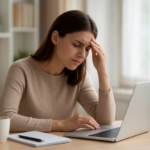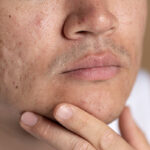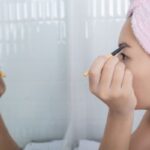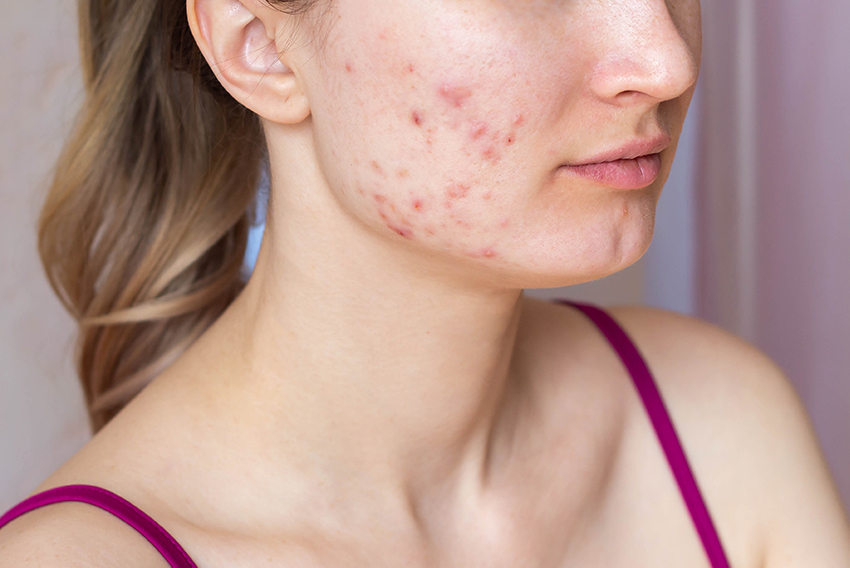Introduction:
Even though acne frequency varies by age and gender, the skin problem that affects millions worldwide persists. Millions worldwide suffer from acne. Millions have acne, a skin disease. Nevertheless, several phrases exist for the massive issue of “acne,” each with its qualities and origins. Acne is common. Each of these expressions has a distinct history. Acne has several features; thus, it needs a customized treatment to control each. Due to acne, this technique is necessary. Acne may manifest as blackheads, whiteheads, cysts, or nodules. Acne may appear in several ways. Other acne symptoms may occur in several ways. This is another way acne may appear.
Understanding the Types of Acne:
Acne Vulgaris:
Studies on acne vulgaris, a difficult-to-treat dermatological disorder that affects people of all ages, are fascinating. All people get acne vulgaris. These skin lesions result in comedones, papules, pustules, nodules, and cysts with varied effects. An astoundingly complex interaction exists between acne bacteria, sebaceous glands, and hormones. Microorganisms have complex interactions.
- Comedonal Acne:
The most visible manifestation of comedonal acne is comedones, non-inflammatory lesions caused by excess sebum and dead skin cells in hair follicles. These two elements accumulate to form comedones, which do not induce inflammation. Comedones are the most apparent sign of comedonal acne. The most visible indicator of acne caused by comedone pores is comedones. According to this analysis, two forms of comedones may be found:
– Open comedones, or blackheads, arise when pores remain open for long. Other comedones exist than blackheads. Blackheads are sometimes called comedones, which means “black.” The substance within pores may oxidize, turning it black. This is because pores are restricted.Whiteheads are acne that forms as pores constrict, blocking particle flow beneath the skin. They are closed comedones. This activity will cause a white or flesh-colored bump depending on the individual.
- Inflammatory Acne:
Inflammatory acne may cause papules, pustules, nodules, and cysts. Symptoms of inflammation-related acne include edema. Each lesion indicates a different stage and severity of the disease. Remember this vital aspect. Bacteria, especially Propionibacterium acnes, multiply in debris-clogged pores, causing these lesions. This increases acne risk from bacteria. Irritation leads to infection.
– Papules are small, elevated crimson bumps. Their development is generally caused by follicular irritation. Their sensitivity to touch and swelling are signs of inflammation, although they are not always equal.
– Pustules are white or yellowish because they contain pus in their center. Papules resemble pustules. Pustules of dead skin cells, bacteria, and white blood cells indicate a more advanced inflammatory response.
– Nodules indicate increased inflammation. In addition to being evident and entrenched, they inflict severe pain, distinguishing them from other things. Inflammation that has spread deep into the dermal layers causes these complex, bulging lesions, which may last weeks or months. This inflammation may be the issue.
– Cysts on the skin indicate inflammatory acne, the most severe kind. Large, pus-filled nodules under the skin characterize these diseases. Body nodules may be anywhere. Cysts, known for their severe pain, require preventative and efficient treatment to minimize scarring and postpone subsequent difficulties.
Other Types of Acne:
In addition to acne vulgaris, several other types of acne exist, each with its distinct characteristics and causes.
- Acne Rosacea: This chronic skin disorder causes redness, flushing, and tiny, pus-filled pimples resembling acne lesions. It is worse than acne vulgaris and usually produces redness and flushing in the face. Acne rosacea typically affects people over 30, and several causes might cause it. Sunlight, stress, hot meals, and certain medications are among these causes.2. Acne conglobata: This rare acne is severe. Massive, linked nodules and abscesses cut deep into the skin, causing significant scarring. Acne conglobata is a skin enemy. If untreated, this illness may persist for years, darkening one’s skin. It seems to favor males over females.
3. Acne fulminans: Adolescent boys and males suffer from this rare severe acne. Its abrupt appearance is terrifying. Acne fulminans, which cause severe nodular and ulcerative lesions on the skin, also cause systemic symptoms, including fever, joint pain, and malaise, stressing the need for immediate medical treatment. Fulminans acne has severe nodular and ulcerative lesions.
- Acne Mechanica: Acne mechanica, often called “sports-induced acne” or “frictional acne,” is caused by friction, pressure, or occlusion. Also called “mechanical acne” and “sports-induced acne.” Related to “frictional acne.” This acne shows how exercising benefits the skin. Many athletes and others who wear tight sports gear, helmets, headgear, or clothes have this issue.
- Drug-induced acne: Pharmaceuticals that treat several medical conditions may inadvertently induce or aggravate acne. Drugs, including hormones, anticonvulsants, and corticosteroids, may cause drug-induced acne. After stopping the troublesome medicine, this acne cures swiftly, which is lovely at the height of dermatological misery. It is a comforting occurrence.
Treatment Options for Acne:
Acne treatment depends on the kind, severity, and cause. Dermatologists may prescribe medications or perform specialized treatments for more severe acne. Over-the-counter and topical acne treatments may help milder cases, but severe acne may need them. Many acne treatments are available, each aimed to cure a different feature of acne. Include these:
1. Topicals: The weapons used to fight acne vary in potency and purpose. Strong chemical warrior Benzoyl Peroxide fights inflammation and sneaky microorganisms in pores. Its cleansing effect helps healthy, blemish-free skin win.
Salicylic Acid, a gentle exfoliant, penetrates the skin’s fortress to attack dead skin cells and stubborn obstructions that clog pores and sow acne seeds. Each treatment shows its efficacy and resolution with a cleaner, brighter complexion.
Retinoids are silent strategists who use cellular turnover to deceive opponents. They regulate skin biology to prevent acne and prepare the skin for a breakout-free future. They inspire acne patients to transform through persistence.
2. Oral Medications:
Antibiotics Oral antibiotics reduce acne-causing germs and inflammation. This soothes sensitive, inflammatory skin.
– Oral contraceptives: Oral contraceptives minimize sebum production and pimples by regulating hormones. This contraceptive is ideal for hormonal acne sufferers.
Isotretinoin, a potent vitamin A derivative, is a last resort for severe, resistant acne. It transforms skin by addressing numerous areas of acne etiology, improving clarity and texture for years.
3. Procedures: – Chemical peels: Lightly touch your skin to remove dead skin cells. This gives a refreshed and beautiful complexion with regulated exfoliation.
Non-invasive microdermabrasion uses tiny crystals to softly irritate the skin. This eliminates impurities and makes the face seem brighter and smoother.
4. Laser treatment: Laser therapy surgically targets acne-causing bacteria, reduces inflammation, and improves skin restoration.
Conclusion:
In conclusion, acne is complex, and several treatment choices exist for diverse face looks. Knowing about acne kinds and treatments, people may take preventative measures and have a clean, appealing complexion. A qualified dermatologist must create a tailored treatment strategy that considers the patient’s traits and causes of acne. Proper therapy may improve acne, skin health, self-confidence, and well-being.







